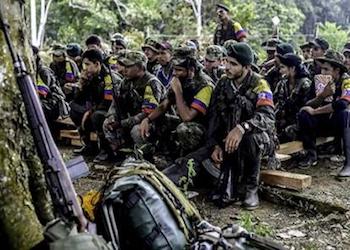Authorities in Colombia have seized close to $100 million in assets allegedly belonging to FARC dissidents, as the state begins the mammoth task of identifying and dismantling the vast illicit interests that are being taken over by criminalized guerrilla splinter groups.
The Colombian military and prosecutors executed raids in four departments around Colombia, occupying 277,000 hectares of lands believed to be owned by breakaway factions of the Revolutionary Armed Forces of Colombia (Fuerzas Armadas Revolucionarias de Colombia – FARC), reported El Tiempo. In addition, prosecutors identified several companies allegedly used as FARC money laundering fronts, including the mining companies that disguised the origins of illegally mined coltan and tungsten.
Most of the assets were linked to factions of the 1st, 7th and 40th Fronts of the FARC in the east of the country that have broken away from the guerrillas’ ongoing demobilization process. Colombian authorities say so far they have identified splinter groups from five FARC fronts, with approximately 500 guerrilla fighters abandoning the peace process, according to El Tiempo.
The FARC that remain committed to the process, meanwhile, have begun to hand over their assets, with the National Land Agency (Agencia Nacional de Tierras – ANT) reporting the guerrillas had turned over 293,000 hectares for the Land Fund set up as part of the peace process.
InSight Crime Analysis
It is an encouraging sign that the Colombian authorities are already moving on the assets held by FARC splinter groups. However, the value of the seizures empathizes just how much wealth will be up for grabs with the FARC’s departure from the underworld as a national force, and just how tempting those riches will be for guerrillas unconvinced of the merits of participating in the peace process.
SEE ALSO: Special Investigation: The FARC, Peace and Possible Criminalization
The authorities’ most recent estimates that 500 FARC fighters — amounting to nearly 7 percent of the guerrilla fighting force identified by the government — have broken away from the peace process and remain in arms underplays the levels of risk of FARC dissention and criminalization.
Although the bulk of the FARC’s guerrilla fighters are now concentrated in demobilization zones, an estimated 10,000 or more members of militias remain outside the process. The chaotic implementation of the accords so far significantly increases the risk more fighters will drop out of the process and return to the underworld further down the line.

